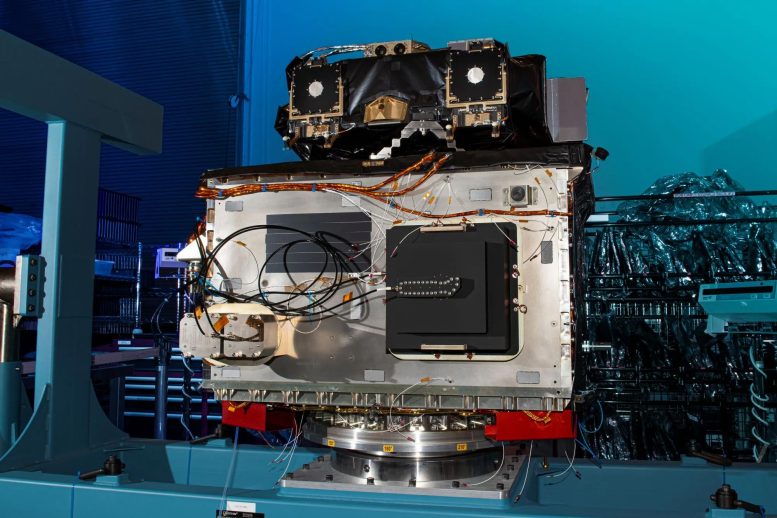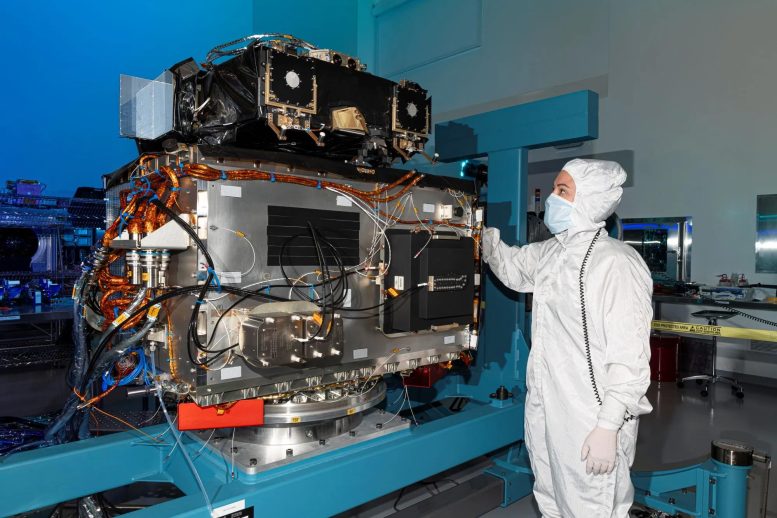The Carruthers Geocorona Observatory, featuring an integrated UV spectrometer, is set to launch in 2025 and will be stationed at Lagrange Point 1 to study the Earth’s exosphere. This groundbreaking SmallSat mission aims to analyze how the outermost layer of the atmosphere reacts to solar-induced space weather. Credit: NASA
The Carruthers Observatory, launching in 2025, will explore the Earth’s exosphere from a stable point one million miles away, providing unprecedented continuous observations.
The ultraviolet (UV) spectrometer was successfully integrated into the satellite bus of the Carruthers Geocorona Observatory.

BAE Systems successfully completes the integration of the Carruthers Geocorona Observatory’s ultraviolet (UV) spectrometer onto the satellite bus, the next major step in completing the NASA Earth-monitoring satellite. Credit: NASA/BAE Systems
Carruthers is a small satellite (SmallSat) and once in orbit at Lagrange Point 1 (L1), the observatory will use an advanced UV imager to observe the exosphere — the outermost part of the atmosphere — to determine how it changes in response to space weather caused by the Sun. Carruthers is expected to be the first SmallSat to operate at L1, a gravitationally stable orbit point between the Earth and Sun about one million miles away, and it will be the first satellite to provide continuous observations of the Earth’s exosphere.

BAE Systems technician inspects the Carruthers Geocorona Observatory satellite after integration of the ultraviolet (UV) spectrometer onto the satellite bus. Credit: NASA/BAE Systems
The mission was previously called the Global Lyman-alpha Imager of the Dynamic Exosphere (GLIDE), but it was renamed in 2020 in honor of Dr. George R. Carruthers, the renowned scientist responsible for designing and building the moon-based telescope that took the first images of the Earth’s geocorona from space as part of the Apollo 16 mission.
Carruthers is currently scheduled to launch in 2025 as a rideshare component of NASA’s Interstellar Mapping and Acceleration Probe (IMAP) mission.





